OUR HISTORY
Longest Place Name
The stories of heroic exploration in this mountainous and once greatly forested country goes back a very long way. Te Moana-nui-a-Kiwa sailing-craft voyaged to the shores of these islands over a thousand years ago. These original people travelled across the land and named places that would become part of today’s heritage landscape.
One of the greatest explorers in the history of Aotearoa was Tamatea Ure Haea, also known as Tamatea Pokai Whenua and Tamatea Pokai Moana (Tamatea the explorer of the Land and Tamatea the explorer of Oceans). Tamatea was born into a family of explorers, and he continued the legacy. He was a man of enormous curiosity and energy, who roamed throughout Aotearoa, from Muriwhenua to Murihiku – the far north to the deep south. Hence, the names associated with Tamatea and his journeys are to be found throughout the length and breadth of Aotearoa.
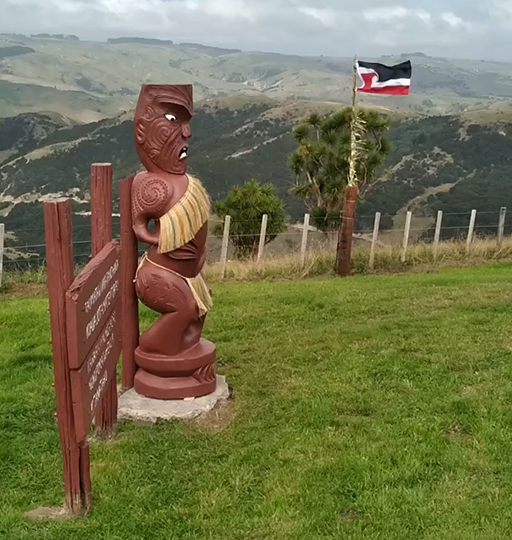
Tamatea Ure Haea originated from the Takitimu waka, which is considered by some as being one of the most tapu of the waka that voyaged to Aotearoa.
The Canoe Takitimu left Hawaiki for New Zealand about A.D. 1350. It carried sacred relics and those tohunga where those schooled in the old-time lore of Hawaiki. It arrived at the western end of Ninety-mile Beach at a place called Awanui, and then travelled on round the island to the safe landlocked harbours of the East Coast. As Tamatea decided to stay at Tauranga, Tahu took charge of the canoe as it travelled on in search of greenstone.

Tamatea-Ariki-nui was the commander of the waka Takitimu and some tribal traditions consider Tamatea-Arikinui and Tamatea-Ure-Haea, to be the same person. However, the most common version is that Tamatea-Ure-Haea was the grandson of Tamatea-Arikinui, also known as Tamatea-Mai-Tawhiti. When Tamatea-Arikinui had decided to settle he took to wife, a descendant of the Toi people, and acquired the name Tamatea-Mai-Tawhiti (Tamatea-from-afar). He was respected for his past accomplishments and died shortly after the birth of his son, Rongokako.
Rongokako himself was to become a notable ancestor as a tohunga who could take giant strides. He was not academic like his father and was an average student at the school of the learning (whare-wānanga).
The fact that he was an older student may have accounted for the fact he proved as a poor scholar. He was many time times out of the house for drowsiness, and but for the personal interest of Tupai, whom we remember as one of the high priests of the Takitimu Canoe, Rongokako would have been expelled. Was it not Tupai who had travelled with the late commander from Hawaiki?
However, Rongokako did excel in athletic pursuits and the art of racing from one location to the next. The saying Nga Tapuwae o Rongokako (the great strides of Rongokako), is a reference to his ability to take giant strides, which gave him the advantage during competitive races. Rongokako would win favour, and the eventually, the hand of his wife Muriwhenua, in such a race. The race was between Rongokako and the expert canoeist Paoa. Paoa travelled via the waterways, while Rongokako strode across the land, leaving footprints at Kahuranaki in the Heretaunga (Hastings) area, Kirihaehae at Mahia, and Te Tapuwae o Rongokako near Whangarā.
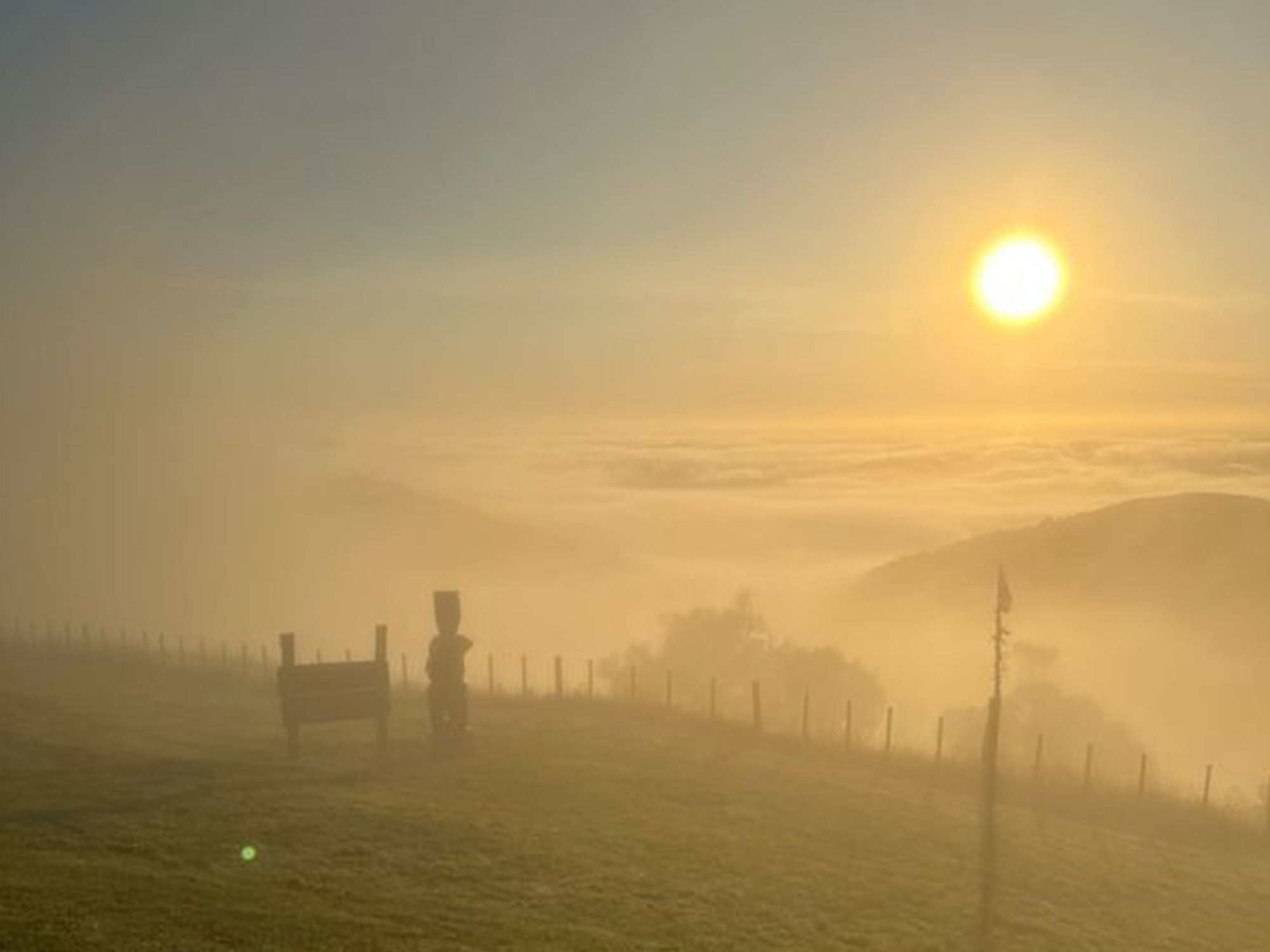
The story of Rongokako was told throughout the east coast. Below was an extract taken from Elsdon Best’s book “Tuhoe, Children of the Mist”,
This story reminds us of the legend of Paoa and Rongo-kako, the champion strider of the East Coast. These two ancestors were travelling up the East Coast of the North Island. Paoa rowed steadily forward, not being gifted apparently with any extraordinary powers of locomotion. Rongokako would wait until Paoa got far ahead of him and take a huge stride and so overtake him. This procedure seems to have annoyed Paoa, who fixed up a tāwhiti, or spring trap, in order to trap the agile Rongokako. But Rongokako the strider was not to be so caught. He took a long step, passing over the trap and springing it with his toe, so that taratara, or the setting stick of the trap, flew violently off into space, eventually coming to the earth in the Waikato district, where it said to still exist in the form of a tree.

And so, Tamatea – Ure – Haea was born to be an explorer. He had in his veins the blood of a Pacific Ocean viking, his grandfather, Tamatea-mai-Tawhiti; and the blood of one who could stride over geographical obstacles, his father, Rongokako.
Tamatea – Ure – Haea was born of the highest rank and was considered an Ariki. The attributes and achievements of his forefathers were widely known. Thus, the skills and accomplishments of Tamatea-Ure-Haea, both personal and inherited, gave him mana and tapu.
An individual is born with tapu which becomes an essential part of their make-up. The level of their personal tapu may fluctuate according to the fortunes of the person. A lifetime of successful living combined within services to the tribe (people) consolidates the tapu and may increase it.
As a child, Tamatea would have been fussed over by the iwi (people), and from the conception special karakia, oriori and waiata would had been written and recited in his honour. Like his father Rongokako, Tamatea would have attended the whare wānanga (school of learning) set aside for special and potential leaders. This is where he would have acquired the knowledge and skills of navigation, karakia tūturu (sacred prayer) and other attributes, in order to lead his people as a great leader.
He (Tamatea-Ure-Haea) chose as his crew forty able-bodied men as bold as himself, and set out to cruise around the island. He called at many places and made the acquaintance of the people living in many parts of the island. He circumnavigated and travelled throughout the land, and from the splendid accomplishment he got his third and fourth names… Tamatea-Pokai-Whenua and Tamatea-Pokai-Moana.
In the course of his travels Tamatea-Ure-Haea left his mark on many places by bestowing them with names which remain to this day. The most famous of these places is little hill with a long name, near the township of Porangahau, in the Hawke’s Bay.
The Aotearoa Geographic Place names database, maintained by the Land Information Aotearoa, records the name as:
Taumatawhakatangihangakoauauo-tamateapokaiwhenuakitanatahu.
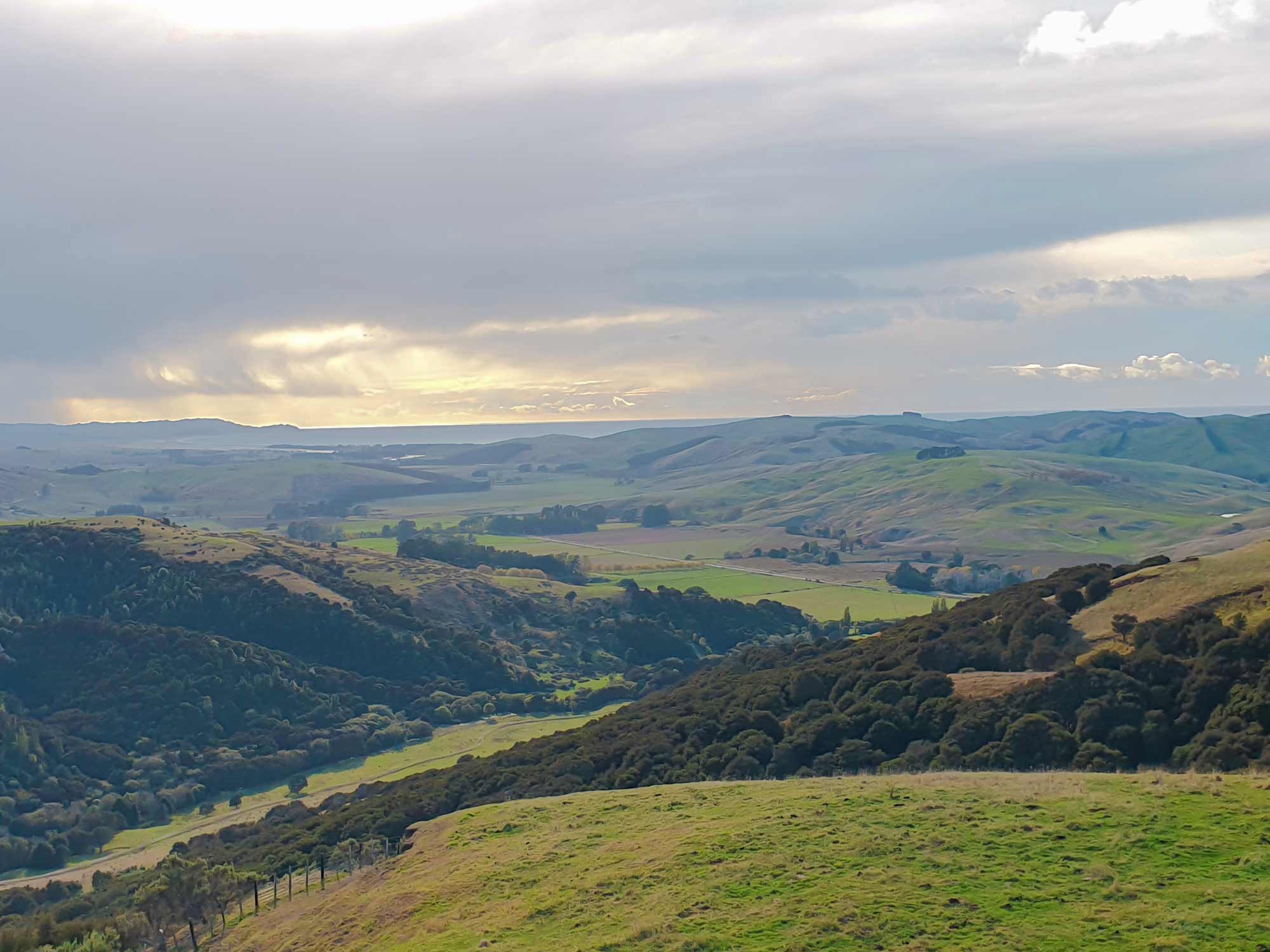
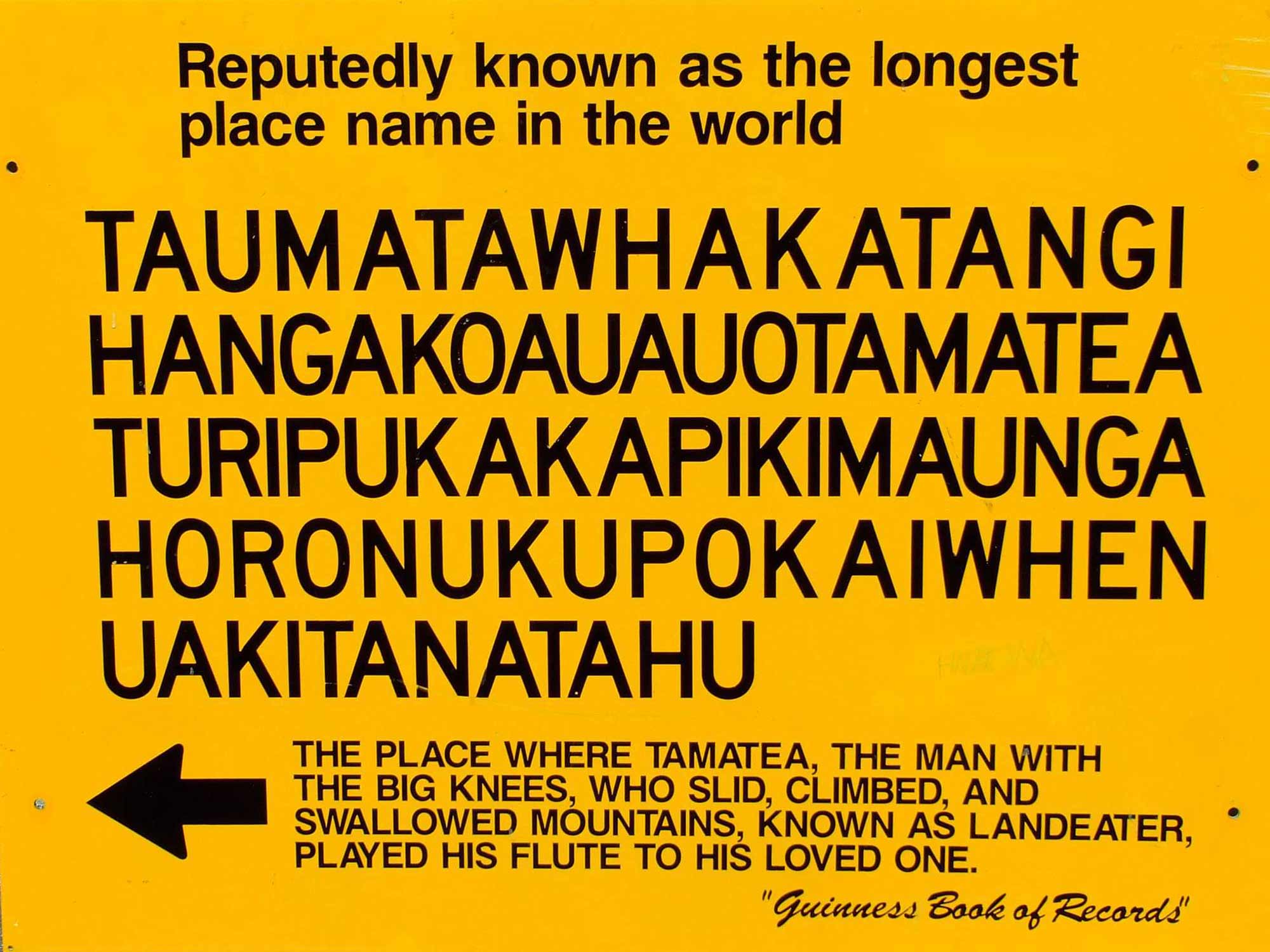
The other, longer version is:
Taumatawhakatangihangakoauauotamateaturipukakapikimaungahoronukupokaiwhenuakitanatahu (the hill where Tamatea the great explorer, mountain climber, and circumnavigator of the land played his flute in lament to his loved one).
This place has gained a measure of fame as one of the longest place names in the world, and has featured in many jingles, advertisements, and songs. The name is often shortened to “Taumata” by locals for ease of conversation.
The site where Tamatea played his flute is located in an area known as the Mangamaire, south of the Whawhakanga Range. There have been many layers of occupation of this region, including Te Tini o Awa, Ngai Tara, Ngāti Ira/Ngai Tahu, Rangatāne and latterly, (after the Te Angiangi gifting) a combination of Te Whatuiāpiti and Rangitane hapū and Ngāti Manuhiri. An input of Kahungunu influence through Ngārangiwhakaupoko ( great grandson of ariki Te Huki) saw Ngāti Kere becoming the leading hāpu but the Taumata is recognised of being within the land of Ngāti Hinetewai. Te Taumata is located on traditional Pae Maunga (ranges) known as Whāwhākanga-o-Hinetewai. Whāwhākanga is named after an ancestor of the Kurahaupo tradition, Te Rangiwhawhakanga, a descendant of Tanehimoa the eponymous ancestor of the Porāngahau based Rangitane hapū Ngati Tanehimoa.

For many decades the romantic notion was held that Tamatea played his flute to a lover, and this was promoted in pictures and sign posts. However, today this account is less accepted with local hapū actively being involved with the new interpretation board and signage.
Longest Place Name in the World
Tamatea was a well-known chief, warrior and explorer of his time.
He is the ancestor of the Kahungunu people of Pōrangahau, and acquired
many names to commemorate his prowess.
Whilst passing through the inland district of Pōrangahau,
Tamatea encountered the Ngati Hine (Hinetewai) people and had to fight them
to get past. In the battle known as Matanui, his brother was killed.
Tamatea was grieved at the loss that he stayed for some time at that place and each morning
he would sit on the knoll to play a lament on his Koauau. Hence the name indicating the hill
on which Tamatea the chief of great physical stature and renown played a lament
on his flute to the memory of his brother.
Taumata the Place
For many generations local hapū have known the location of the actual site, and on special occasions have gathered on Taumata.
More recently, local hapū have also become more involved in the preparation and good practice regarding the use and prevention of exploitation of the name TaumatawhakatangihangaKōauau-otamateaturipukakapikimaungahoronukupokaiwhenuakitanatahu. They consider Taumata as part of their culture identity and have sung songs about its cultural importance for many decades.
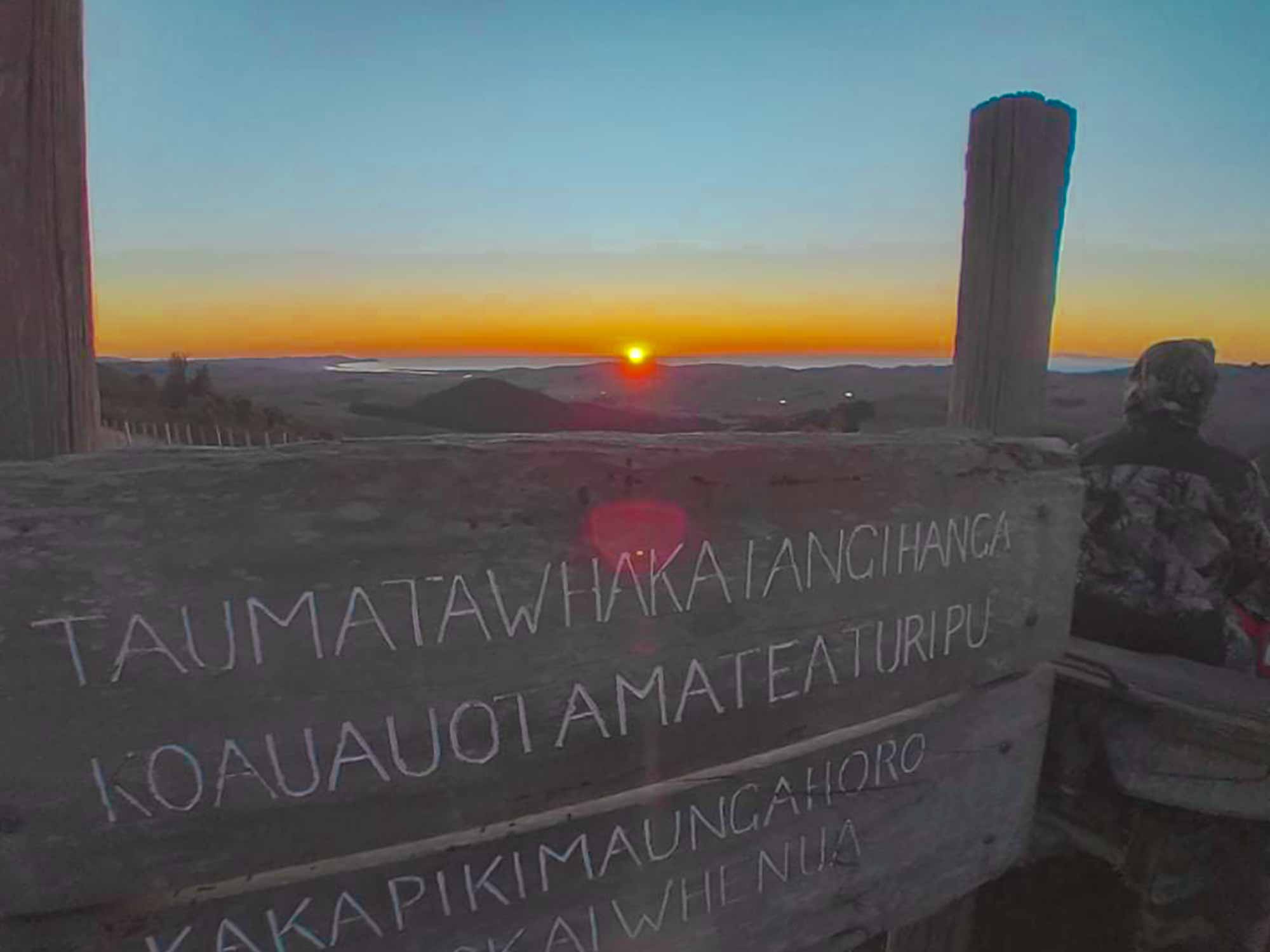
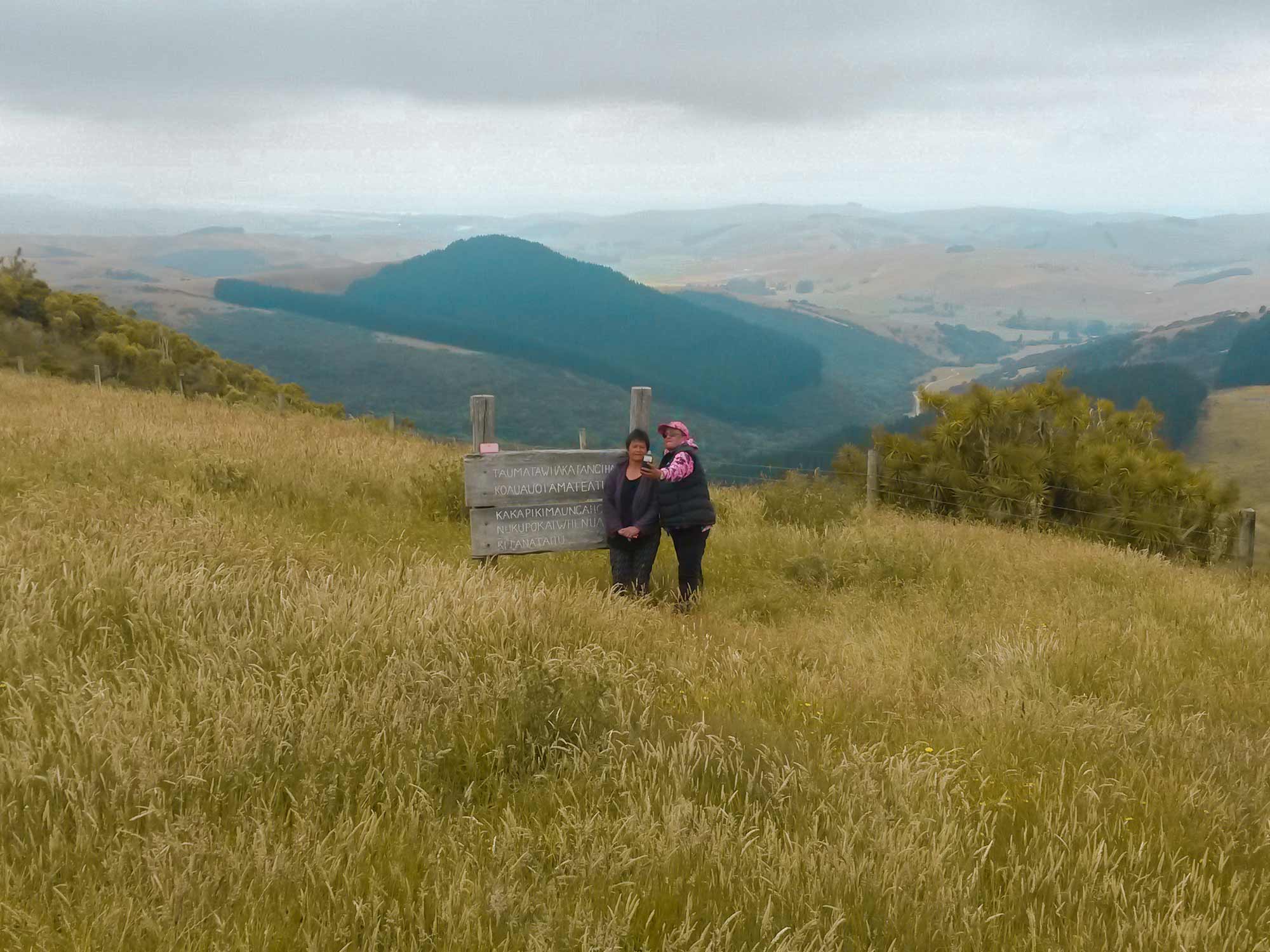
The tranquil view from Taumata stretches along the coast in the East from Te Paerahi (Pōrangahau) to Parimahu (Blackhead point), across to the Ruahine and Puketoi ranges in the West. This view was once only assessable to individuals willing to hike over the hills to reach the site and other sites of significance to local hapū. However, due to the increased interest in this place of significance, the landowners opened a dirt road to public in the 1990’s which has made the Taumata site more accessible for four wheel drives. The drive to the top of the hill takes 25-35 minutes from the Wimbledon main road.
Taonga Pūoro
Traditional Māori Instruments
The story of Taumata is one of the few early oral accounts with regards to the traditions of taonga pūoro (traditional Māori instruments), and the use of the Koauau or more specifically, the Koauau Ponga Ihu.
Taonga puoro are made from a variety of materials such as gourds, bone, stone, wood, and shell, and were traditionally played for healing, rituals, and re-create particular moments in time. “Taonga pūoro were used to portray different aspects of the environment – water, birds, the wind… Natural imitation of sound could recreate these elements and re-evoke the essence of a moment.”
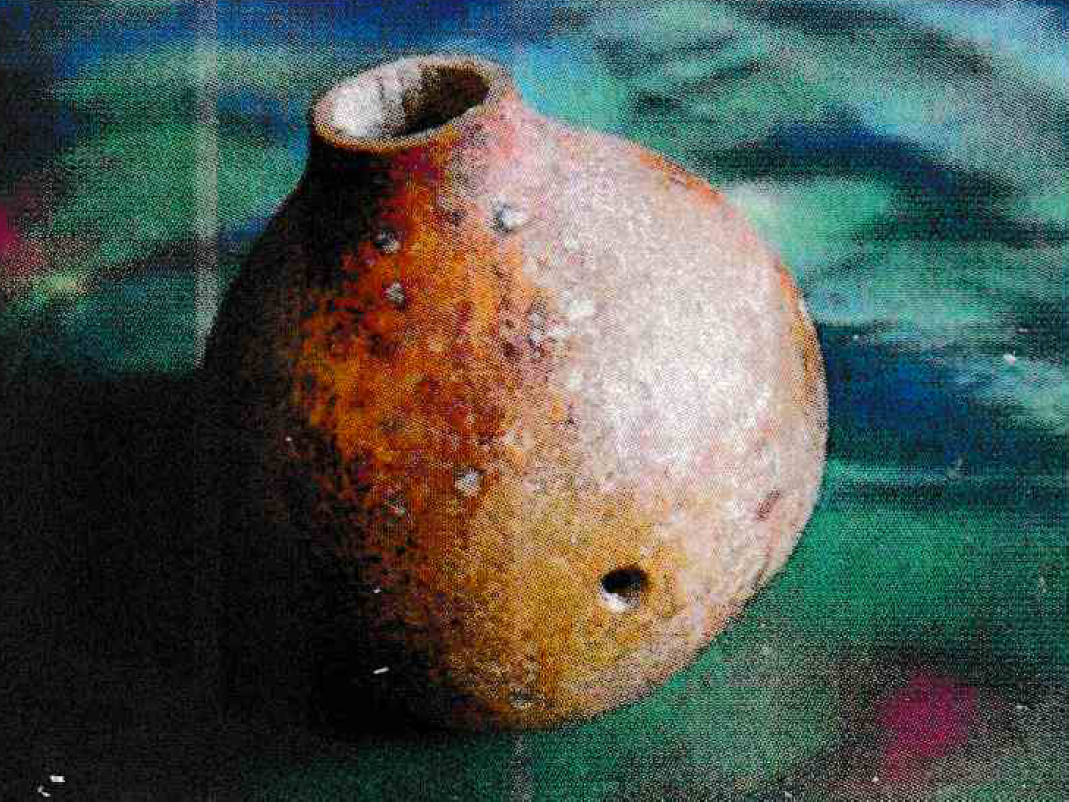
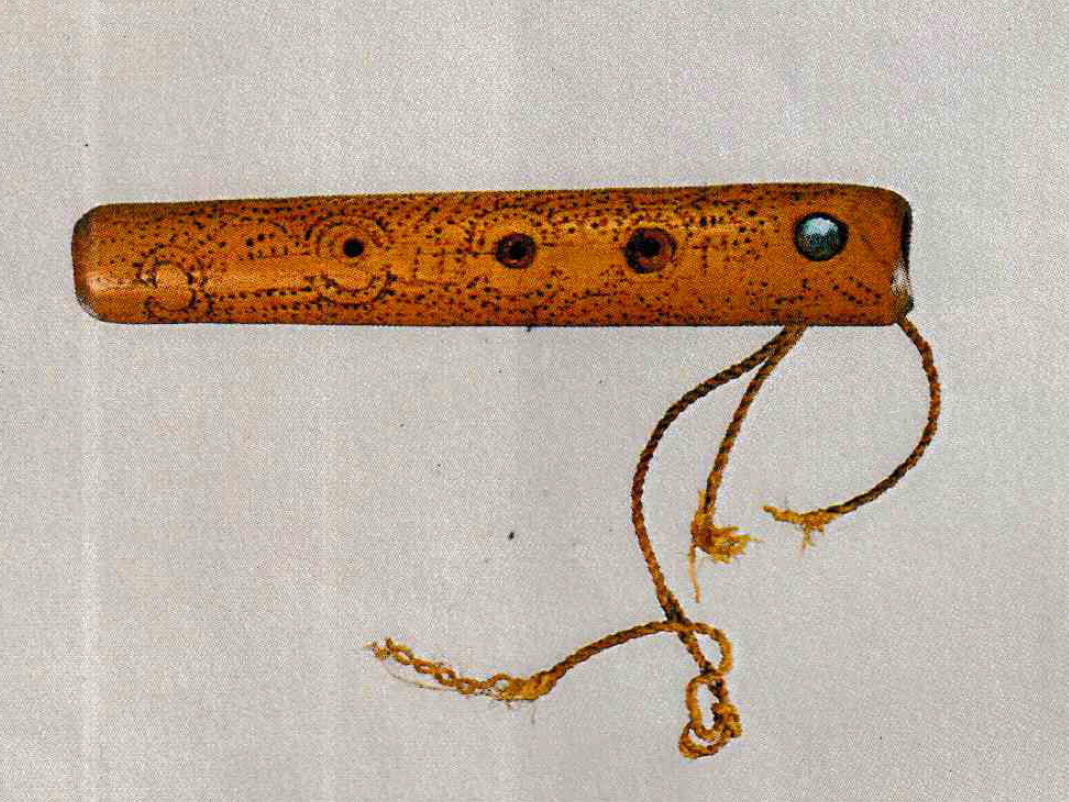
Traditional Māori society used in community and very rarely for entertainment, highlighting a conflict with the western concept of music. A variety of musical instruments were used by Māori in birthing, for healing, helping things grow, and in death to help usher people from the living world to the next, says University of Waikato performer and lecturer in Taonga Pūoro, Rangiiria Hedley.
Today, the resurgence and knowledge base with regards to taonga puoro is owed to a lifetime of understanding, playing, making and recording of Māori instruments by the likes of the late Dr Hirini Melbourne, Richard Nunns and Brian Flintoff.
There are a large variety of flutes that were commonly used by tangata whenua in traditional times. The Nguru, Putorino, Pumotomoto, Rehu and perhaps others.
The Koauau is the most common flutes. It is essentially an open cylinder made from bone, wood, or less commonly, stone. The Koauau Ponga Ihu (nose flute) is another type of koauau that has been argues as the type played by Tamatea, as stated by James Foster in the early 1930s.
The Hill where Tamatea-who-bored-through-the-land (rested and) played on his nose-flute.
(The koauau was a small flute blown with the nostrils)
Richard Nunns, a performer, and presenter of Taonga Pūoro, describes the use of the Koauau and other instruments,
The voice of both the Koauau and Koauau Ponga Ihu is exquisite…(the sound) arouses extraordinary animation from the elders that hear these instruments (and) is quite powerful…what we hear from elders is whakatangi, te hotuhotu manawa e tangi kōrero ana – aesthetic qualities of sobbing, crying and weeping…emotional things you will only hear with this instrument.
Richard Nunns also discusses the essence of playing an instrument like the koauau,
I am much more a performer of ngā taonga pūoro than a song writer, but the kinds of emotion and meaning I try to breathe into my playing are such things as tangi or sounds of crying; hotu or suppressed and sad sighing. In short, I try to sound like an old singer of mōteatea.
This analysis of the sounds of koauau supports local tikanga, the belief that the koauau is a traditional instrument of Tangi (lament), and not an instrument of courting. Different iwi has developed their own protocols. For example, with regards to the well-known romanticisied story of Hinemoa and Tutanekai, some say it was a combination of the Koauau and Putorino that Tutanekai used to court Hinemoa.
The terms ko and auau are references to the sounds of Tane Mahuta (God of the forest) – te Kō a te manu (the sounds of the birds), and te auau a te kuri (the howling of the dog). The haunting sound of the Koauau encapsulates the sorrow and grief one expresses with the loss of a loved one. The Koauau plays an important part in assisting with the journey of the wairua (spirit) from Te Ao marama (the world of light) to Te Pō (the after world).


Hence, the taumata site is associated with the process of mourning or tangi. The term tangi or tangihanga describes a Māori approach to the process of grieving for someone who has died. It is a tikanga (protocol) that enables people to express their sense of mamae (pain), pouri (sadness), or wehe (loss), not only for their loved one, but for those who have passed before them. In essence, Taumata was a place of lament for Tamatea Ure Haea, the great traveller.
This tikanga (tradition) has been maintained by local hapū members who continue to use the Koauau during tangi (bereavements) at Te Kaiwhitikitiki, the local urupā (cemetery) at Porangahau.
Tamatea had several wives, one of these being Muriwhenua. From this important union came their son, Kahungunu, the eponymous ancestor of Ngāti Kahungunu.
Anthony Tipene Matua
A U T H O R
Taumatawhakatangihangakoauauotamateaturipukakapikimaungahoronukupokaiwhenuakitanatahu
is a Manga Kōrero, and a place well-known throughout the world as an iconic landmark.
The cultural, spiritual, and traditional values are just as important.
